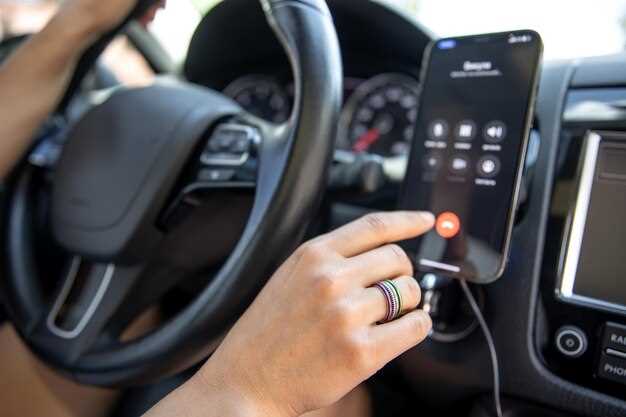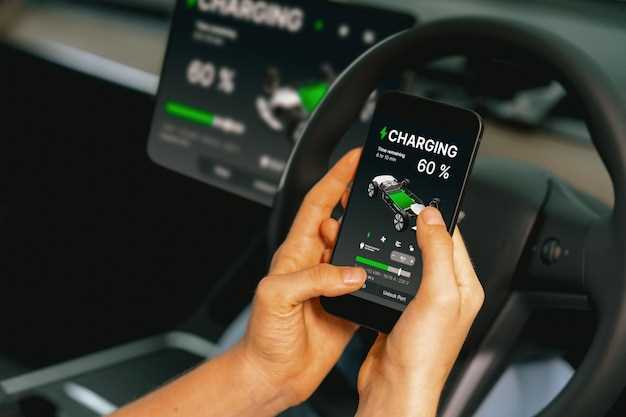
The ever-increasing concern regarding emission levels from vehicles has led to a growing demand for innovative solutions in the automotive industry. One such solution is the optimization of driving practices, particularly through the use of cruise control. This technology not only enhances comfort during long drives but also plays a significant role in minimizing fuel consumption and reducing harmful emissions.
Cruise control maintains a vehicle’s speed by automatically adjusting the throttle, which helps drivers avoid unnecessary acceleration and deceleration. This steady velocity ensures that the engine operates at its most efficient level, directly impacting the amount of emission released into the atmosphere. By harnessing this feature, drivers can contribute to environmental conservation while also enjoying a smoother driving experience.
Moreover, modern advancements in cruise control systems have led to the development of adaptive and predictive technologies that further enhance their effectiveness. These systems can adjust to changing traffic conditions, optimizing fuel efficiency and controlling emissions more effectively than traditional methods. As awareness grows around the importance of lowering emissions, utilizing cruise control represents a practical and impactful approach for conscientious drivers.
Optimizing Fuel Consumption with Cruise Control Settings
Effective use of cruise control can significantly enhance a vehicle’s fuel efficiency, leading to a notable reduction in emissions. By maintaining a steady speed on highways, cruise control minimizes the constant acceleration and deceleration typical of manual driving. This consistent operation reduces fuel consumption as the engine runs at optimal levels without unnecessary fluctuations.
When setting cruise control, it’s essential to choose an appropriate speed that aligns with the vehicle’s efficiency curve. Generally, driving at 55-65 mph is ideal for most vehicles, as this range is where the engine operates most effectively. Exceeding this speed can lead to increased air resistance, which in turn elevates fuel consumption and emission output.
Another critical factor is terrain. On hilly roads, cruise control can aid in smoother transitions between acceleration and deceleration, however, it’s important to remain attentive. Constantly overriding cruise control on steep inclines or declines may counteract the advantages, leading to higher fuel usage. Hence, a mindful approach towards controlling speed in relation to road conditions can optimize performance.
Regular maintenance of the vehicle also plays a vital role in ensuring that cruise control settings lead to maximum fuel efficiency. A well-maintained engine, properly inflated tires, and clean air filters work harmoniously to minimize emissions while utilizing cruise control effectively.
In conclusion, understanding the interplay between cruise control adjustments and driving conditions can provide significant benefits in controlling fuel consumption and achieving a reduction in harmful emissions.
Understanding the Impact of Speed on Emission Levels

Vehicle speed plays a critical role in determining emission levels of harmful pollutants. When a vehicle accelerates rapidly, it often leads to increased fuel consumption and, consequently, higher emission rates. Conversely, maintaining a steady speed at optimal levels can contribute to significant emission reduction. This is where cruise control technology becomes advantageous.
Using cruise control allows drivers to maintain a consistent speed without frequent acceleration and deceleration. By reducing unnecessary fluctuations in speed, the engine operates more efficiently, resulting in lower fuel consumption and fewer emissions. Studies show that driving at moderate speeds, typically between 50 to 65 miles per hour, can minimize the release of nitrogen oxides and carbon dioxide compared to driving at higher speeds.
Moreover, exceeding speed limits not only increases the risk of accidents but also amplifies greenhouse gas emissions. The aerodynamic drag on a vehicle increases with speed, leading to inefficiencies. Therefore, activating cruise control at optimal speeds not only enhances driving comfort but also fosters environmental responsibility by promoting emission reduction strategies.
In summary, understanding the relationship between vehicle speed and emissions underscores the importance of employing technologies like cruise control. By maintaining a steady and moderate speed, drivers can contribute to cleaner air quality and reduced environmental impact.
Incorporating Cruise Control in Eco-Driving Techniques

Integrating cruise control into eco-driving practices can significantly reduce vehicle emissions while enhancing fuel efficiency. By maintaining a consistent speed, cruise control minimizes unnecessary acceleration and deceleration, which are key contributors to increased fuel consumption. This steady throttle application allows the engine to operate within its optimal efficiency zone, leading to lower emissions of harmful pollutants.
When engaging cruise control on highways or long distances, drivers can benefit from a more relaxed driving experience. Efficient speed management reduces the likelihood of rapid acceleration, helping to sustain a fuel-efficient pace. Moreover, many modern vehicles feature adaptive cruise control systems that automatically adjust speed based on traffic conditions, further optimizing fuel usage and emissions control.
Incorporating cruise control effectively into eco-driving techniques involves understanding ideal speed ranges. The most fuel-efficient speeds typically fall between 45 to 65 mph, where engine performance aligns favorably with aerodynamic resistance. Utilizing cruise control within this range allows drivers to take advantage of lower fuel consumption and reduced emissions.
To maximize the benefits of cruise control, it is essential to turn it off when approaching hilly terrains or heavy traffic situations. Maintaining an active driving style in these scenarios is crucial for managing speed fluctuations that can elevate fuel usage and emissions levels. Driver awareness is fundamental in achieving a sustainable driving approach while utilizing cruise control effectively.
In summary, incorporating cruise control into eco-driving techniques not only enhances comfort but also plays a vital role in reducing vehicle emissions. By understanding and utilizing this technology wisely, drivers can contribute to a more sustainable environment while enjoying the benefits of efficient driving.



